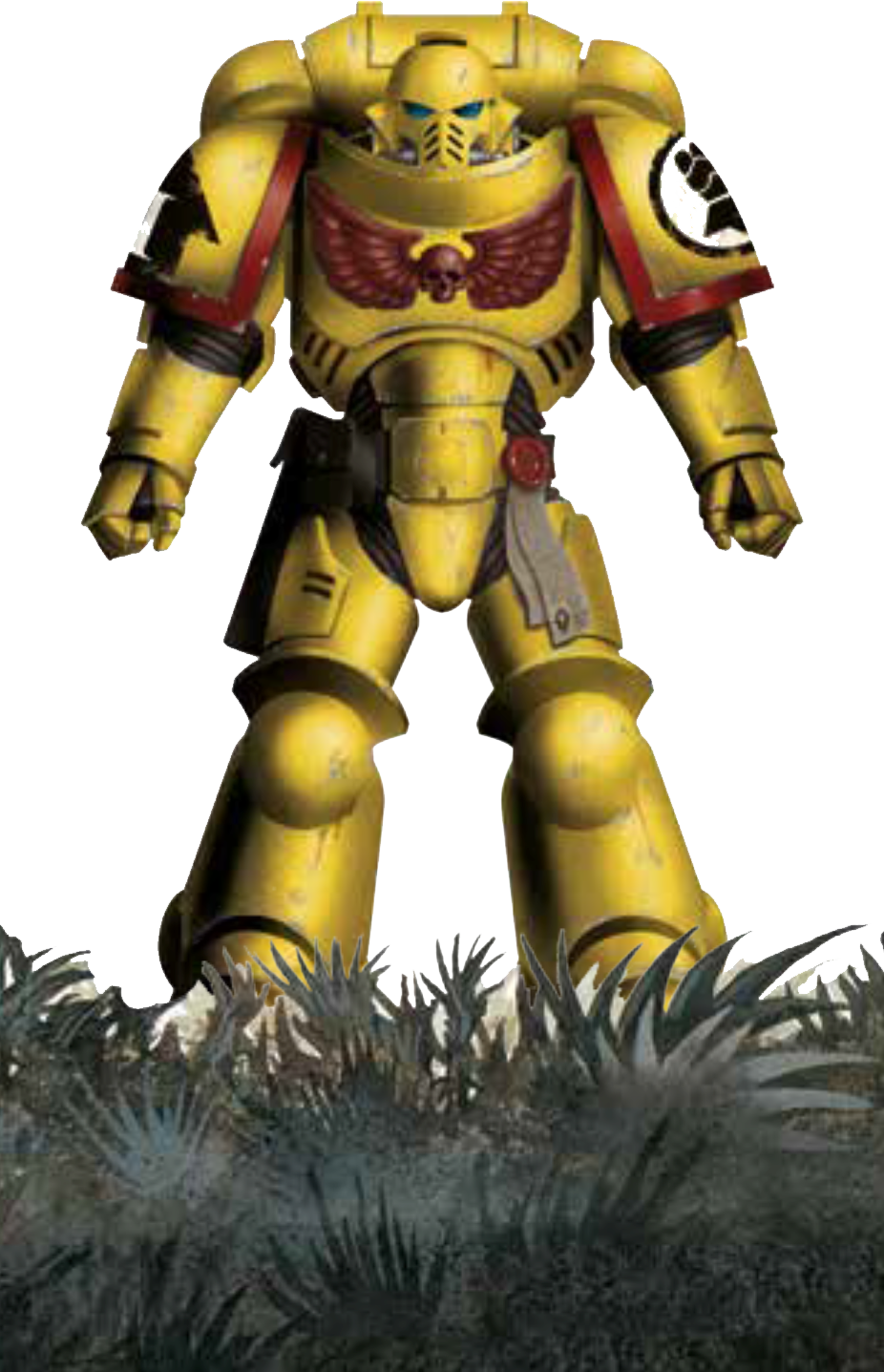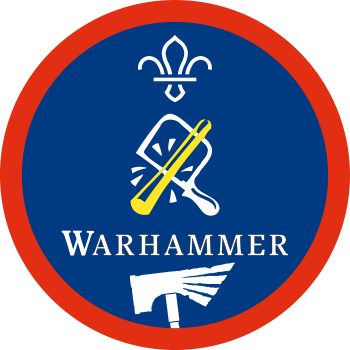
Make a model bunker
You’ll need
- Scrap paper
- Coloured pens or pencils
- A4 card
- Scissors
- Glue sticks
- Sticky tape
- Clean items of recycling
- Access to a printer

Before you begin
- Print out the ‘Bunker supplies’ sheet. If you can, print it onto card. Don’t worry if you can’t – people can stick each piece of the template onto card once they’ve cut them out.
Set the scene

- Space Marines are humans who have been genetically enhanced to give them super-strength.
- They wear power armour that’s full of technology. It not only protects them in space, but it also makes them even stronger and faster.
- There are different armies of Space Marines, known as Chapters. Each has its own colours and symbols.
- The Space Marine in this activity belongs to the Imperial Fists, shown by their yellow armour and the fist symbol on their shoulder pad.
On a routine patrol, your squad of Space Marines has crash-landed on a planet. A dense jungle filled with swamps surrounds what little’s left of their craft. Help may not arrive for some time, and although the planet scanned as uninhabited, other dangers may await in the humid depths of the wild.
Each Space Marine has collected some useful materials from the crash and the surrounding area. You’ll need to work together to create a bunker to protect your supplies and communication beacon.
Tailor the design
- The person leading the activity should use the information above to introduce the Space Marines and explain their situation.
- Everyone should split into small groups. The person leading the activity should give each group a copy of the ‘Bunker supplies’ sheet. Everyone should cut out each of the items.
- Each group should make their Space Marine. They should fold along the dotted lines, glue on the ‘glue’ tab, then fold the template into a triangle so the grey tabs glue together and the Space Marine stands upright.
- Each group should make their logs. They should roll up each of the rectangles to make two straws, and use small pieces of sticky tape to secure the edges.
- Each group should design how they’ll use these materials to create a bunker that protects their Space Marine’s supplies and communication beacon.
- Everyone should think about how the Space Marine will use their bunker to keep lookout for danger, how they’ll defend the bunker, and how they’ll keep their supplies safe.
- Everyone should use the items from the ‘Bunker supplies’ sheet, scrap card, and clean recycling to make their bunker.
- Once everyone’s finished their bunkers, they should take it in turns to show them off! Do everyone’s designs look different?
Reflection
This activity was all about problem-solving. Everyone designed and build a bunker that was fit for purpose – but it needed to do a few different things. Can anyone remember what the bunker needed to do? Their Space Marine needed to be able to look out for danger, defend the bunker, and keep their supplies space. How did people make sure their bunker did all of the things it needed to? Did everything go right first time, or did people have to try a few different things before something worked? If people had access to other materials, what would they like to use? Would they add or change anything?
Safety
All activities must be safely managed. You must complete a thorough risk assessment and take appropriate steps to reduce risk. Use the safety checklist to help you plan and risk assess your activity. Always get approval for the activity, and have suitable supervision and an InTouch process.
- Scissors
Supervise young people appropriately when they’re using scissors. Store all sharp objects securely, out of the reach of young people.
- Glue and solvents
Always supervise young people appropriately when they’re using glue and solvent products. Make sure there’s plenty of ventilation. Be aware of any medical conditions that could be affected by glue or solvent use and make adjustments as needed.
- Rubbish and recycling
All items should be clean and suitable for this activity.
- It’s up to you how much clean recycling you use. You could give everyone the same items to work with, or people could choose from a big pile.
- Vary the group sizes – it can be tricky for big groups to work together, but sometimes it’s useful to have lots of ideas and pairs of hands to help build.
Make it accessible
All Scout activities should be inclusive and accessible.
If you use items such as cardboard boxes and plastic tubs to make solid shelters, you could use them as scenery in a game of Warhammer 40,000.
